Instructional Series
This site will be closing soon as its content has moved to Tāhūrangi.
2024 titles are available on Tāhūrangi. Use the filters to find specific series.
Find Literacy resources at Tāhūrangi - Literacy.
Welcome to the English medium literacy instructional series teaching and learning resources for years 1 to 8.
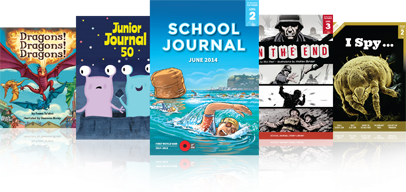
- Gold
- Purple
- Magenta
- Yellow
- 3
- 2
- 4
- 1
- 6
- 4
- 5
- 8
- 7
- 3
- 1
- English
- Social Sciences
- Science
- Health and Physical Education
- Technology
- The Arts
- Mathematics and Statistics
- Non-fiction
- Fiction
- None
- Nature of science
- Geometry and Measurement
- Living world
- Planet Earth and beyond
- Nature of technology
- Physical world
- Number and Algebra
- Statistics
- Technological knowledge
- Material world
- Technological practice
- Engage with science
- Gather and interpret data
- Interpret representations
- Use evidence
- Articles
- Stories
- Poems
Search results
166 items - Showing 71 - 80
-
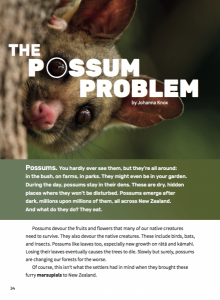
The Possum Problem
by Johanna Knox
illustrated by Adele Jackson
"Possums. You hardly ever see them, but they’re all around: in the bush, on farms, in parks. They might even be in your garden. During the day, possums stay in their dens. These are dry, hidden places where they won’t be disturbed. Possums emerge after dark, millions upon millions of them, all across New Zealand. And what do they do? They eat."
-
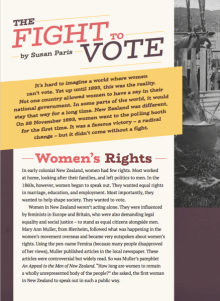
The Fight to Vote
by Susan Paris
"It's hard to imagine a world where women can't vote. Yet up until 1893, this was the reality. Not one country allowed women to have a say in their national government. In some parts of the world, it would stay that way for a long time. New Zealand was different. On 28 November 1893, women went to the polling booth for the first time. It was a famous victory – a radical change – but it didn't come without a fight."
-
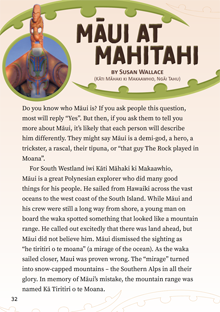
Māui at Mahitahi
by Susan Wallace
Do you know who Māui is? If you ask people this question, most will reply “Yes”. But then, if you ask them to tell you more about Māui, it’s likely that each person will describe him differently. They might say Māui is a demi-god, a hero, a trickster, a rascal, their tipuna, or “that guy The Rock played in Moana”. For South Westland iwi Kāti Māhaki ki Makaawhio, Māui is a great Polynesian explorer who did many good things for his people.
-
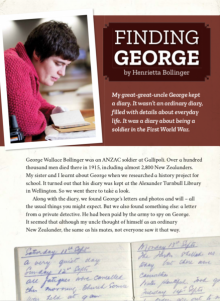
Finding George
by Henrietta Bollinger
In this powerful and moving article, Henrietta Bollinger tells the story of her great-great-uncle George, a soldier in the First World War. Most students will have learnt something about the First World War, and many will know something of their own family stories.
-
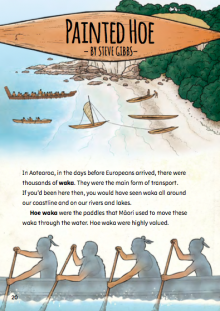
Painted Hoe
by Steve Gibbs
The first peaceful meetings between Māori and Europeans took place in 1769, when James Cook landed in the Tairāwhiti region. During those meetings, Māori traded a number of painted hoe (paddles) for cloth, seeds, potatoes, and other items. The paddles are decorated with the earliest examples of what we now call kōwhaiwhai. They ended up in museums around the world. “Painted Hoe” describes those early meetings.
-
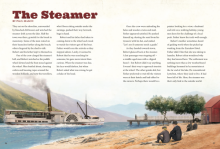
The Steamer
by Paul Mason
illustrated by Dede Putra
"They sat on the shoreline, surrounded by bleached driftwood, and watched the steamer drift across the lake."
-
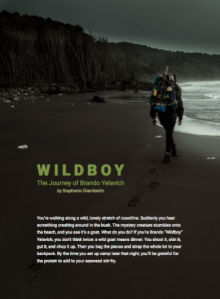
Wildboy: The Journey of Brando Yelavich
by Stephanie Chamberlin
One boy's journey and what he learnt along the way.
-
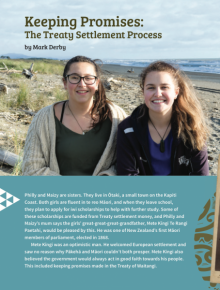
Keeping Promises: The Treaty Settlement Process
by Mark Derby
This article provides an accessible introduction to the Treaty settlement process. The content covers events from 1840, when the Treaty of Waitangi was signed, through to the present day. The material is organised in to sections with brief, clear headings. It also includes a pop-up interview section with quotes from six Māori from different iwi who comment on the Treaty settlement process and what it has meant for them.
-

Trading Taonga: The Story of Pounamu
by Matthew Rout (Ngāi Tahu)
Pounamu is a taonga with deep spiritual significance to Māori. Its beauty, usefulness, and cultural significance made it a highly prized resource that was traded throughout Aotearoa New Zealand. This article explores the pounamu trade from the 1770s through to the present day, discussing the impact of colonisation on the trade of pounamu and how Ngāi Tahu regained kaitiakitanga of pounamu through the Treaty settlement process.
-
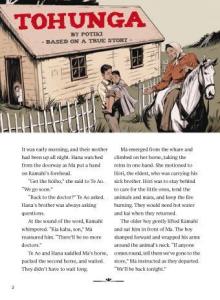
Tohunga
by Potiki
illustrations by Andrew Burdan
This intense and dramatic “slice of life” story recounts the time when a mother had to take her sick child in secret to a tohunga. It is set after 1907, when the New Zealand government made it illegal for tohunga to practise rongoā Māori. “Tohunga” provides rich material for both Māori and non-Māori students to explore themes of cultural similarities and differences.







 Literacy Online home
Literacy Online home
